Abstract
The identification of occupational carcinogens in the workplace is a major concern of epidemiologists. A novel case-control approach has been developed which includes as a key component the assessment of a subject's occupational exposure history by a two stage process. Firstly, the subject is interviewed to obtain a detailed lifetime job history. Then a team of chemists and hygienists, hired and trained to do this work on a full time basis, translates each job into a list of potential occupational exposures. The present study investigated the inter-rater agreement in this type of retrospective exposure assessment. Six trials were carried out over a four year period with different raters and different sets of job files. Some trials involved only internal raters from the "in house" group whereas others involved comparisons between the internal raters and other external raters who had expertise in certain industries. In assessing exposure as simply present or absent, two summary indices of agreement were used: per cent with perfect agreement and Cohen's kappa. In most of the trials the per cent with perfect agreement among raters ranged from 95% to 98%, with kappa ranging from 0.5 to 0.7. The kappas were slightly higher for internal-internal comparisons than for internal-external ones. These results indicate a relatively high degree of inter-rater agreement and lend credibility to the validity of this type of retrospective exposure assessment.
Full text
PDF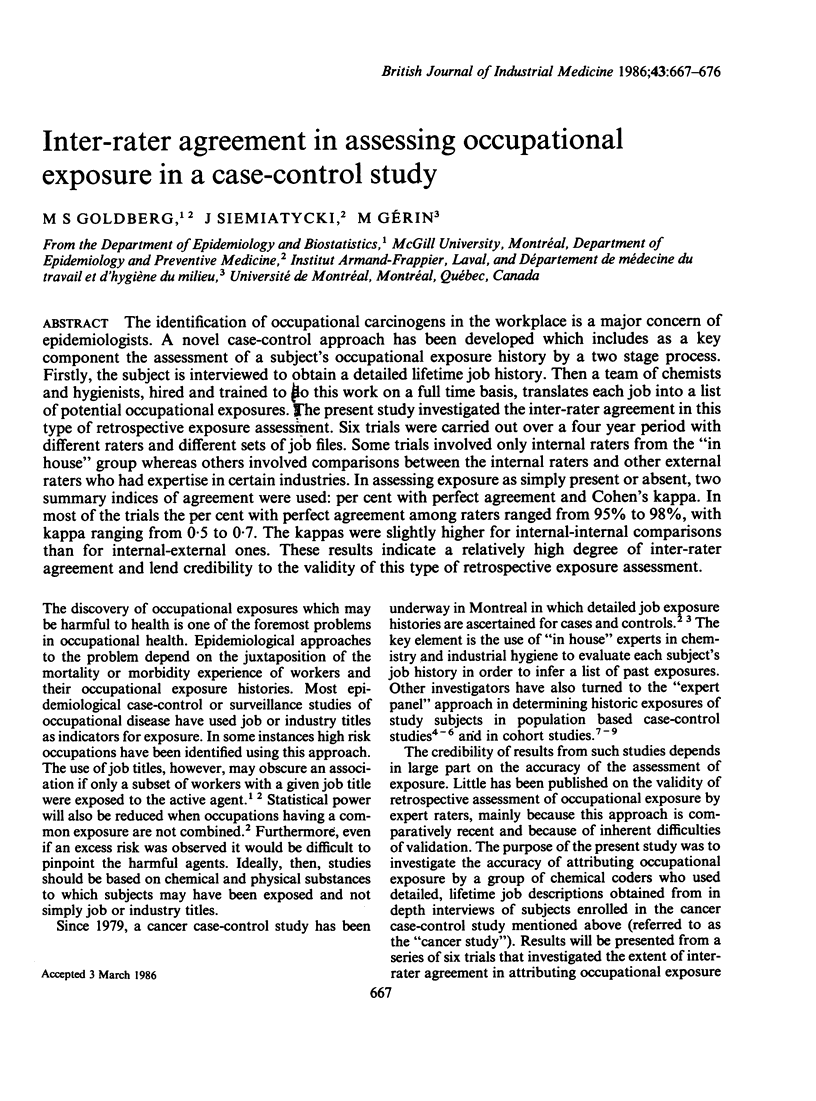

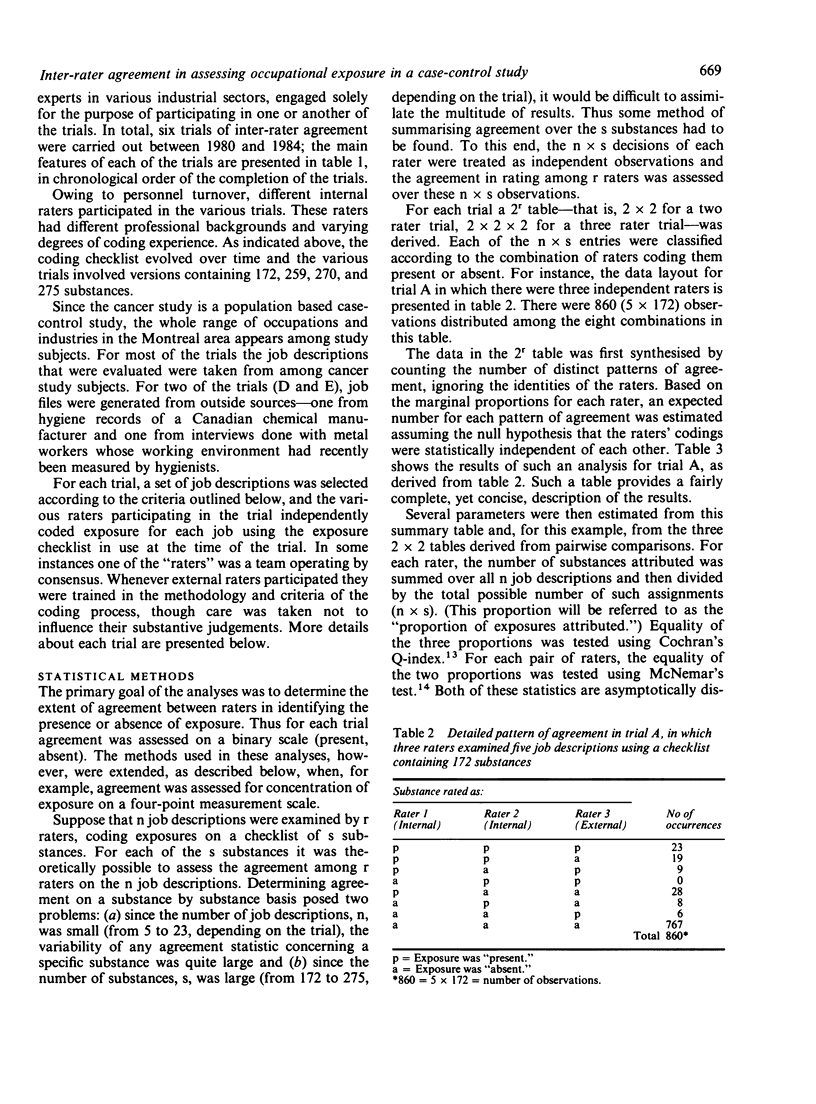
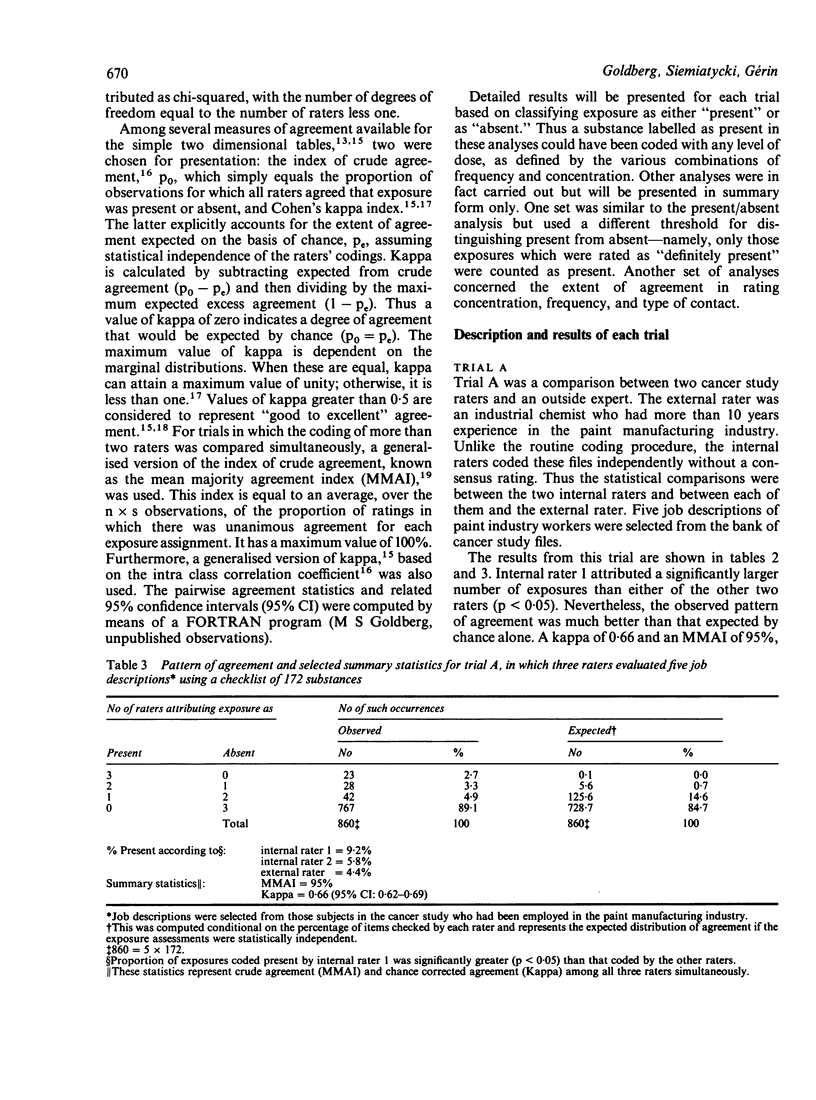
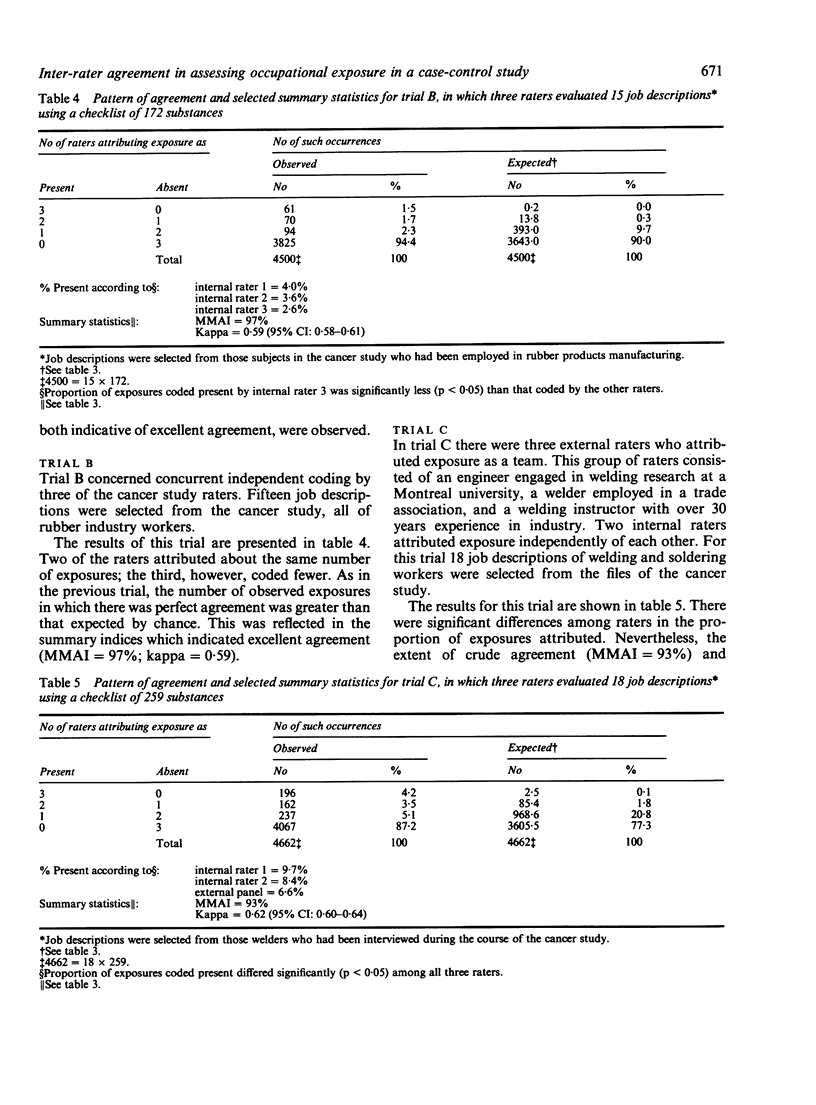
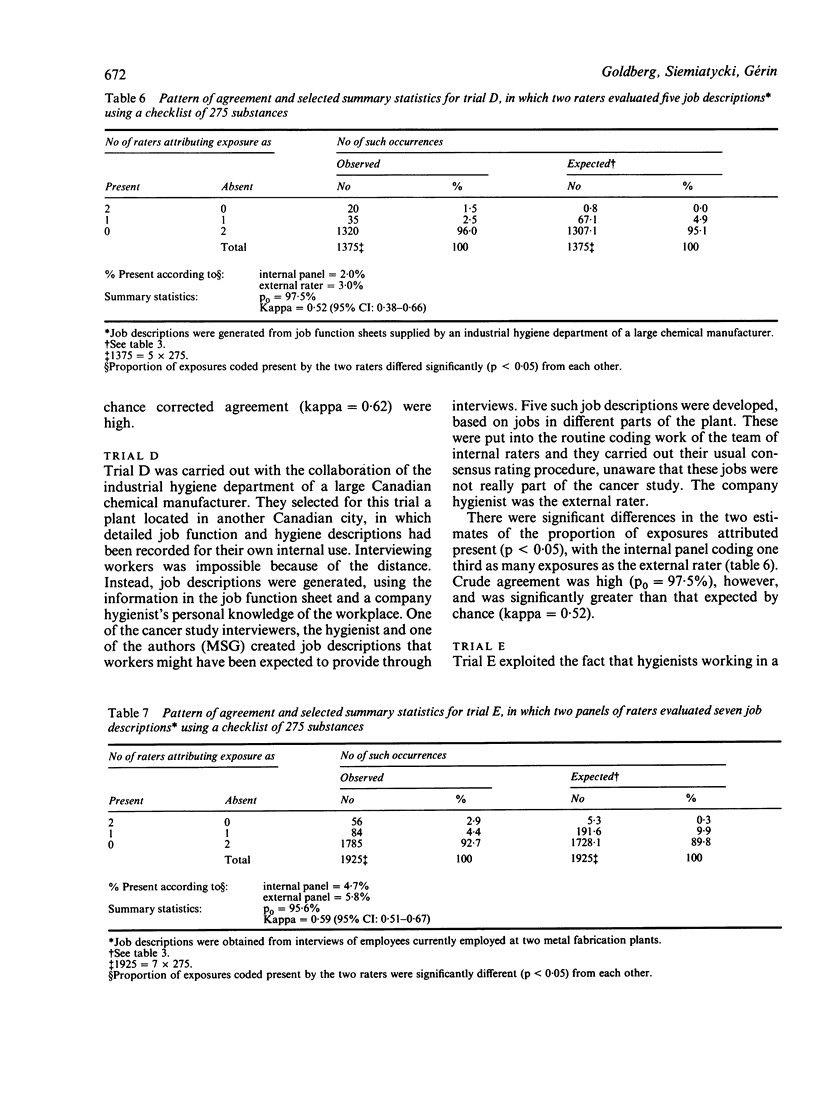
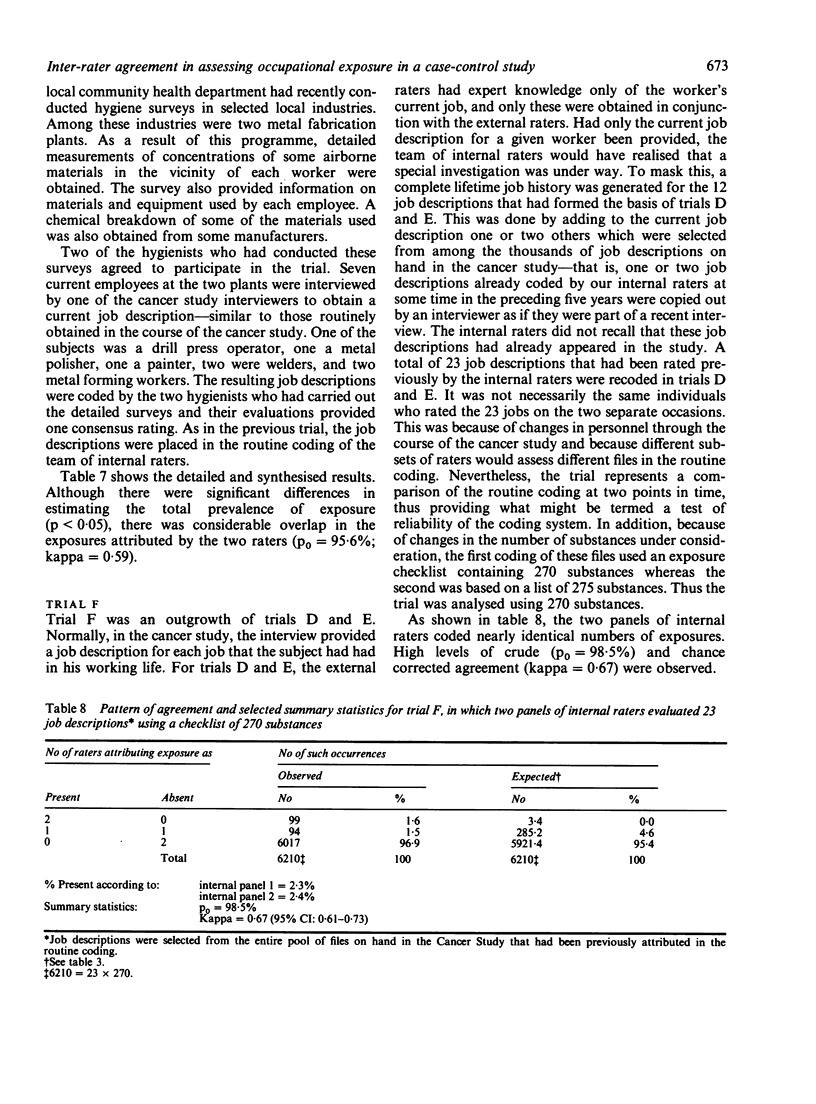
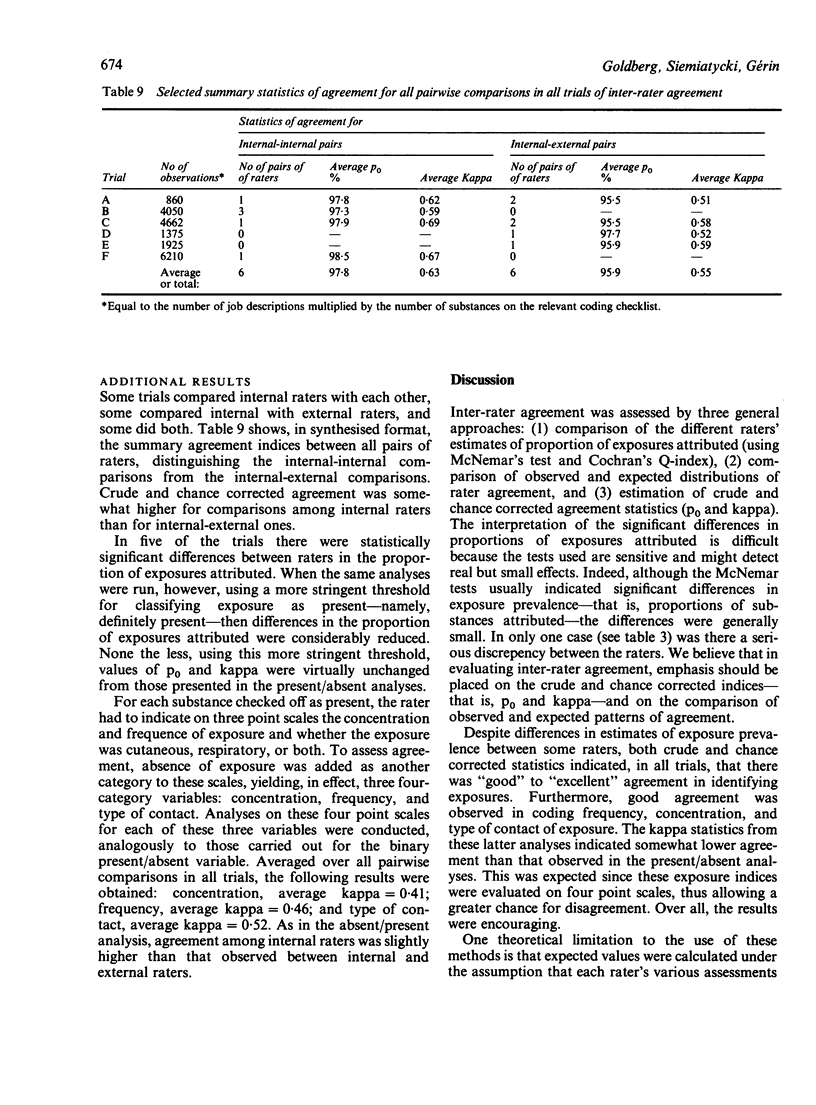
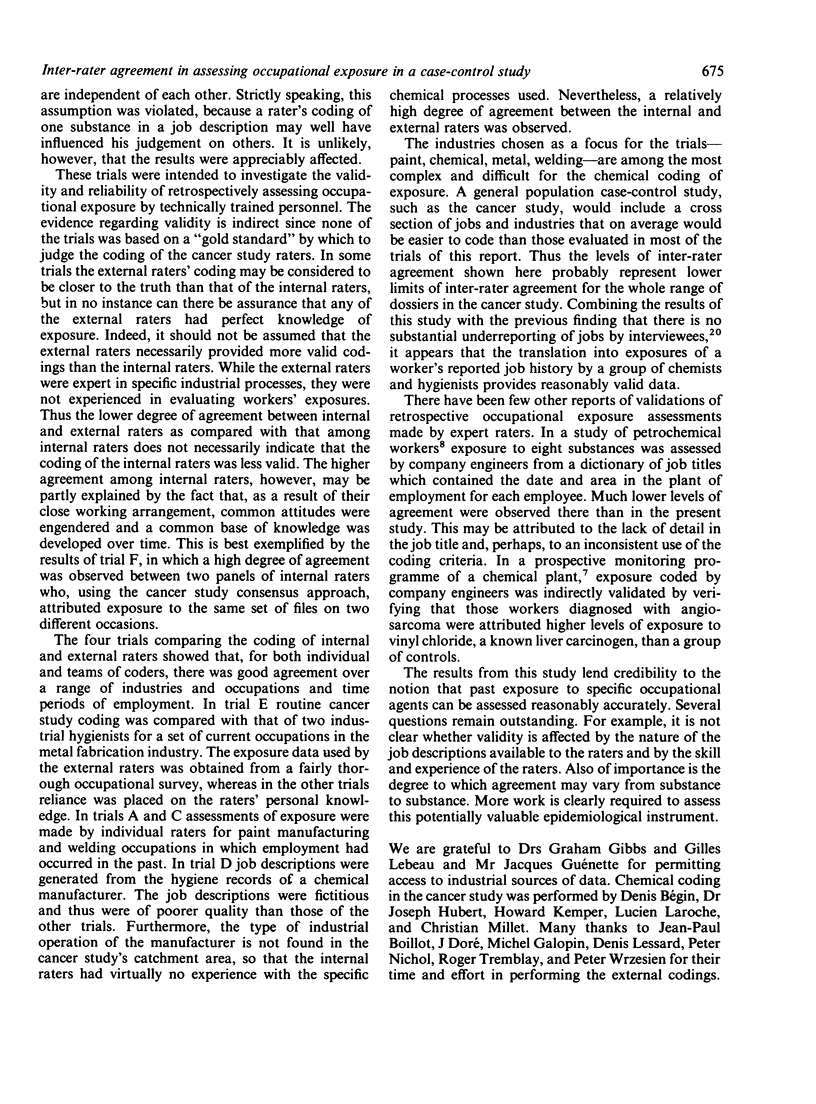
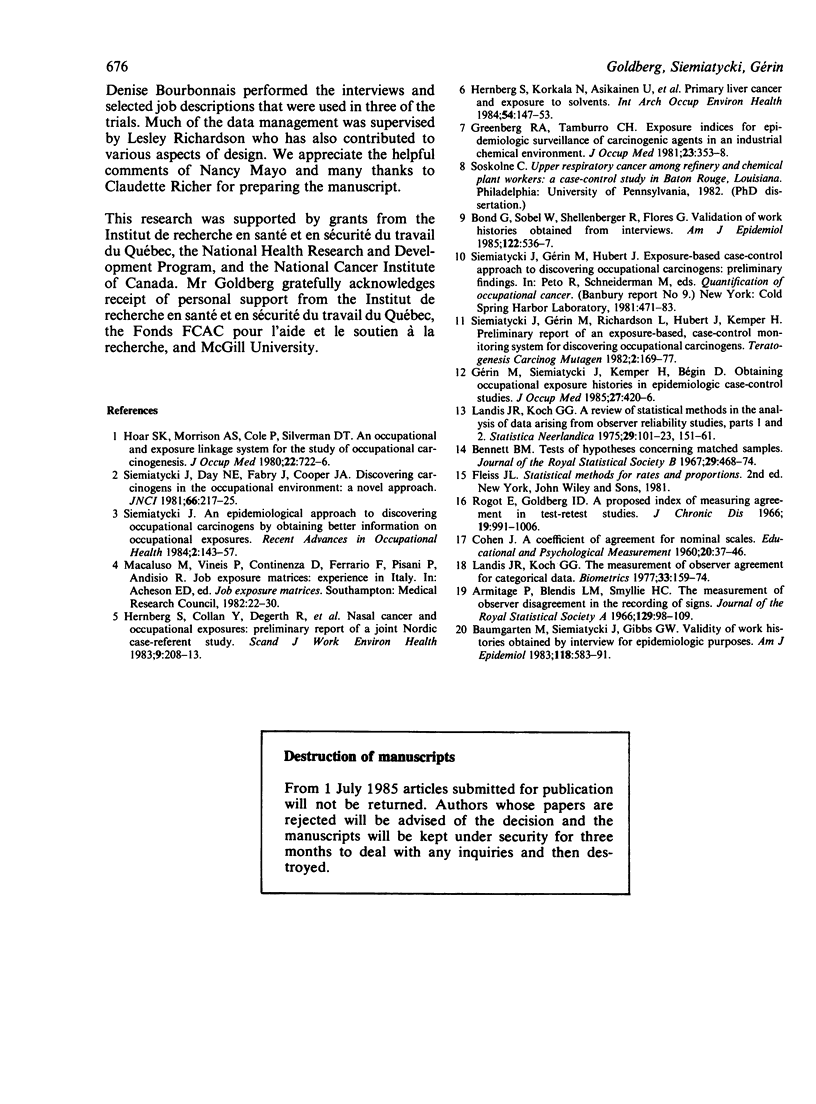
Selected References
These references are in PubMed. This may not be the complete list of references from this article.
- Baumgarten M., Siemiatycki J., Gibbs G. W. Validity of work histories obtained by interview for epidemiologic purposes. Am J Epidemiol. 1983 Oct;118(4):583–591. doi: 10.1093/oxfordjournals.aje.a113663. [DOI] [PubMed] [Google Scholar]
- Greenberg R. A., Tamburro C. H. Exposure indices for epidemiological surveillance of carcinogenic agents in an industrial chemical environment. J Occup Med. 1981 May;23(5):353–358. [PubMed] [Google Scholar]
- Gérin M., Siemiatycki J., Kemper H., Bégin D. Obtaining occupational exposure histories in epidemiologic case-control studies. J Occup Med. 1985 Jun;27(6):420–426. [PubMed] [Google Scholar]
- Hernberg S., Collan Y., Degerth R., Englund A., Engzell U., Kuosma E., Mutanen P., Nordlinder H., Hansen H. S., Schultz-Larsen K. Nasal cancer and occupational exposures. Preliminary report of a joint Nordic case-referent study. Scand J Work Environ Health. 1983 Apr;9(2 Spec No):208–213. doi: 10.5271/sjweh.2423. [DOI] [PubMed] [Google Scholar]
- Hernberg S., Korkala M. L., Asikainen U., Riala R. Primary liver cancer and exposure to solvents. Int Arch Occup Environ Health. 1984;54(2):147–153. doi: 10.1007/BF00378517. [DOI] [PubMed] [Google Scholar]
- Hoar S. K., Morrison A. S., Cole P., Silverman D. T. An occupation and exposure linkage system for the study of occupational carcinogenesis. J Occup Med. 1980 Nov;22(11):722–726. [PubMed] [Google Scholar]
- Landis J. R., Koch G. G. The measurement of observer agreement for categorical data. Biometrics. 1977 Mar;33(1):159–174. [PubMed] [Google Scholar]
- Rogot E., Goldberg I. D. A proposed index for measuring agreement in test-retest studies. J Chronic Dis. 1966 Sep;19(9):991–1006. doi: 10.1016/0021-9681(66)90032-4. [DOI] [PubMed] [Google Scholar]
- Siemiatycki J., Day N. E., Fabry J., Cooper J. A. Discovering carcinogens in the occupational environment: a novel epidemiologic approach. J Natl Cancer Inst. 1981 Feb;66(2):217–225. [PubMed] [Google Scholar]
- Siemiatycki J., Gérin M., Richardson L., Hubert J., Kemper H. Preliminary report of an exposure-based, case-control monitoring system for discovering occupational carcinogens. Teratog Carcinog Mutagen. 1982;2(2):169–177. doi: 10.1002/1520-6866(1990)2:2<169::aid-tcm1770020206>3.0.co;2-o. [DOI] [PubMed] [Google Scholar]


